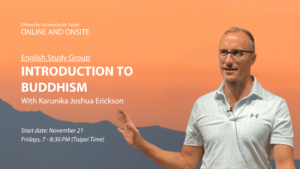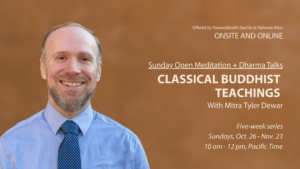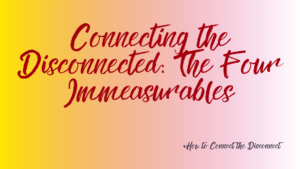Two times in my life, I contemplated suicide. I had reached a point where everything was collapsing about me like a house afire, timbers falling—and I saw extinguishing my life as a way of avoiding what was about to engulf me. Yet I stopped myself, and I’m grateful.
I had lived with self-hatred and despair for a long time. The sources of inadequacy can be traced like rivers, feeding a current that has its own pull and tow, driven by confusion, doubt, and dread. But this tracing is not germane.
My clinging to my life was stronger than my self-loathing. And my clinging, be it to sensual pleasure, mere existence, or the thought of self-destruction, shows the strength of the Second Noble Truth taught by the Buddha, the cause of suffering.
I could be kind and caring to others but not to myself. To weaken the pull of the cause of suffering, I needed to learn to radiate love and compassion for myself first. It was challenging to work with my mind and thoughts, touching what was dark and dangerous. I stumbled as I walked this path. And sometimes I fell hard. But I started to get tastes of honey and sugar, a big change from a life dominated by bitterness.
I touched what I was afraid to touch—my own pain—and I cried. My heart broke as I held my pain in my hands. Peace came first from a regular sitting practice, but the practice of tonglen, also known as “sending and taking,” finally stopped the wheel of suffering. And then came happiness and peace and a wide-open heart.
Breathing Exercise
This exercise is not intended as a psychiatric treatment or therapy. As with any such exercise, check with your doctor or therapist before beginning a new protocol or practice.
- Sit calmly in a quiet place.
- Try as best you can to contact the pain and confusion that have darkened your heart.
- Hold your pain gently and breathe. It might be hard, but feel the ache and any resistance and welcome them in gently with your breath. This may take some time. Baby steps are okay.
- Breathe in deeply and then breathe out consciously. Breathe in your pain, breathe out spaciousness, that room you’ve given yourself to work in, and peace.
- Notice how you’re feeling. A little lightness may appear. This is you blessing yourself. You might want to cry, and that’s fine.
- Continue to take these little steps, breathing in, breathing out, acknowledging your sad, tender heart.
I hope this will bring you the first glimmer of peace, a peace that surpasses understanding.

Andrew Clark first met Dzogchen Ponlop Rinpoche in 1996 at Gampo Abbey and became a formal student in 1999. He was the co-head for study in Boulder from 1999 to 2005. In 2008, Andrew joined the US Karma Sangha board and was its chair from 2011 to 2018. He recently retired from the University of Colorado Boulder, where he taught mathematics and finance.






